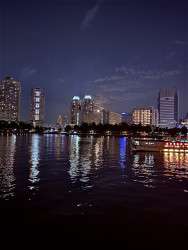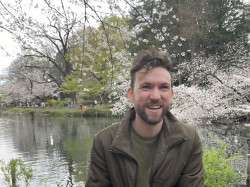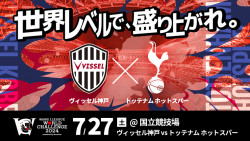
July 30, 2009
Spirit Parties
Japan's Obon and summer festivals are loud and mad enough to wake the dead - Here are a few of the major events being held around the country during the coming month.
By Metropolis
Originally published on metropolis.co.jp on July 2009

(社)青森観光コンベンション協会
Nebuta Matsuri (ねぶた祭り)
When: Aug 2-7
Where: Aomori
The event that put Aomori on the map isn’t actually connected with Obon: the Nebuta Matsuri was originally part of Tanabata, the festival of star-crossed lovers that’s now marked on July 7. It’s best known for its spectacular floats, which bear enormous papier-mâché lanterns depicting samurai warriors and characters from kabuki plays. After being paraded around the city for a few days, these floats are judged and the winners placed aboard a ship for a valedictory tour of the harbor. A similar event is held in nearby Hirosaki from August 1-7-though, confusingly, they change the name from “Nebuta” to “Neputa.”
Nishimonai no Bon-odori (西馬音内の盆踊)
When: Aug 16-18
Where: Nishinomai, Akita Prefecture
Not much goes on in Nishinomai most of the year, but for a few days in August this small town at the foot of Mt. Chokai is transformed into a veritable tourist magnet. Its Obon festival is an eerie affair: come dusk, the streets are lit by lanterns and women perform elegant dances, their faces concealed by black cloth masks or long straw hats to evoke (and possibly invoke) the spirits of the dead. Details of the festival’s origins are a little hazy, though it may be as much as 700 years old.
Funekko Nagashi (舟っこ流し)
When: Aug 16
Where: Morioka, Iwate Prefecture
The Vikings would have enjoyed this one. Elaborate dragon boats containing mortuary tablets and Buddhist offerings, and festooned with paper lanterns are set adrift on the Kitakami River, then—poof!—set alight. There’s nothing a departing soul likes more than a good grilling, after all. A more conventional fireworks show is held afterwards.
Owara Kaze no Bon (おわら風の盆)
When: Sep 1-3
Where: Yatsuo, Toyama Prefecture
Obon is a little late coming to the mountain village of Yatsuo, where it has been merged with the local harvest festival rites. The festivities kick off on September 1, a date traditionally associated by farmers with typhoons and other natural calamities. As night falls, young men in happi waistcoats and women wearing long straw hats take to the streets to perform a slow dance to the sound of shamisen and mournful singing. Kinda creepy, in a cool way.
Marunouchi Ondo Dai Bon Odori Taikai (丸の内音頭大盆踊り大会)
When: Aug 21-22
Where: Hibiya Park, Tokyo
The largest Bon dance in central Tokyo was first held in 1932, but despite spawning a hit song (“Marunouchi Ondo,” which was reworked the following year as “Tokyo Ondo”), it didn’t become an annual fixture. The event was eventually revived in 2003 to mark the 100th anniversary of Hibiya Park, and has continued ever since.
Gujo Odori (郡上おどり)
When: Aug 13-16
Where: Gujo, Gifu Prefecture
Every August, the sleepy town of Gujo erupts into an all-night dance party. During the Edo period, the Gujo Odori was used to promote harmony between different social classes, and it’s still something of a free-for-all today. You don’t need a special outfit to take part, though you might want to don a pair of geta, which supply the distinctive rhythmic clack of the dance. Such is its popularity that the Odori carried on regardless even after Japan announced its surrender on August 15, 1945.
Gozan no Okuribi (五山の送り火)
When: Aug 16
Where: Kyoto
Obon goes out in a blaze of glory in Kyoto each year, as enormous bonfires are lit on the five mountains surrounding the city. These okuribi (literally “send-off fires”) are intended to guide the souls of ancestors who had returned from the great beyond during the festival. Three are shaped as kanji characters (for “big,” “excellent law” and, um, “big” again), while the other two represent a boat (funagata) and a shrine gate (toriigata). The festival is said to date back to the Heian Period (794-1185).
Awa Odori (阿波踊り)
When: Aug 12-15
Where: Tokushima
Like most good things in life, the Awa Odori started with a piss-up. Back in 1587, daimyo Hachisuka Iemasa plied the citizens of Tokushima with alcohol to celebrate the completion of the city’s new castle. The drunken dancing that ensued provided the basis for today’s Awa Odori, a three-day orgy of cavorting in the streets. Groups of male and female dancers strut their stuff to the accompaniment of taiko drums, gongs, flutes and shamisen, and spectators are encouraged to join in.

Awa Odori
Shoro Nagashi (精霊流し)
When: Aug 15
Where: Nagasaki
Families who have recently lost members send their loved ones on a “soul boat” to the sweet hereafter in this spectacular ceremony that closes Nagasaki’s three-day Obon festival. Relatives of the deceased build huge straw boats, which are decorated with lanterns and paraded through the streets to the tune of thousands of firecrackers. On reaching the sea, they’re dumped in the water, allowing the souls to drift away.







